-
 Bitcoin
Bitcoin $105,128.3815
3.90% -
 Ethereum
Ethereum $2,416.0020
7.44% -
 Tether USDt
Tether USDt $1.0005
0.02% -
 XRP
XRP $2.1746
8.78% -
 BNB
BNB $639.2755
3.53% -
 Solana
Solana $144.4068
7.70% -
 USDC
USDC $1.0000
-0.01% -
 TRON
TRON $0.2729
1.26% -
 Dogecoin
Dogecoin $0.1628
6.63% -
 Cardano
Cardano $0.5826
7.56% -
 Hyperliquid
Hyperliquid $37.1757
6.20% -
 Sui
Sui $2.7783
11.64% -
 Bitcoin Cash
Bitcoin Cash $462.3940
2.42% -
 Chainlink
Chainlink $13.1350
11.22% -
 UNUS SED LEO
UNUS SED LEO $9.1304
0.83% -
 Stellar
Stellar $0.2476
8.34% -
 Avalanche
Avalanche $18.0617
6.94% -
 Toncoin
Toncoin $2.9043
3.64% -
 Shiba Inu
Shiba Inu $0.0...01161
7.29% -
 Hedera
Hedera $0.1515
11.26% -
 Litecoin
Litecoin $84.2187
3.78% -
 Monero
Monero $313.8446
4.70% -
 Ethena USDe
Ethena USDe $1.0006
0.03% -
 Polkadot
Polkadot $3.4344
6.81% -
 Dai
Dai $0.9999
0.00% -
 Bitget Token
Bitget Token $4.2647
5.88% -
 Uniswap
Uniswap $6.9164
11.66% -
 Pepe
Pepe $0.0...09897
10.79% -
 Pi
Pi $0.5326
6.57% -
 Aave
Aave $259.4000
13.30%
What does the simultaneous narrowing of the upper and lower rails of the Bollinger Bands indicate? How to predict the direction of the breakthrough?
A simultaneous narrowing of Bollinger Bands signals low volatility and potential breakout in crypto, often indicating a critical turning point in price action.
Jun 24, 2025 at 04:43 pm
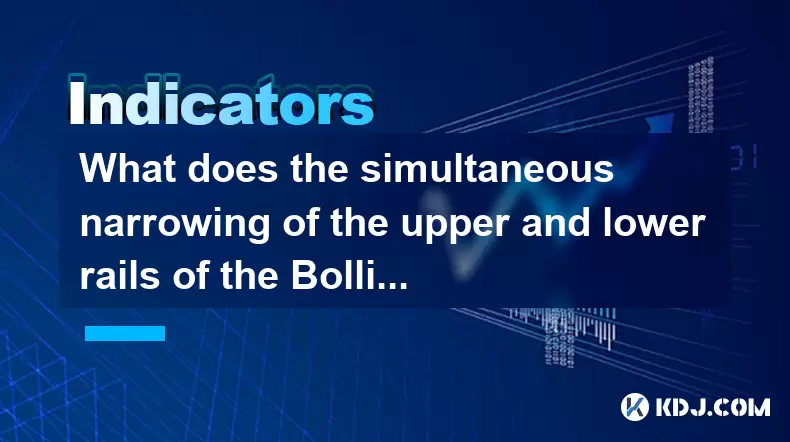
Understanding the Bollinger Bands Mechanism
Bollinger Bands are a popular technical analysis tool used in cryptocurrency trading to assess price volatility and potential reversal points. The indicator consists of three lines: a simple moving average (SMA) in the center, typically set at 20 periods, with two outer bands that represent standard deviations above and below the SMA. These bands expand and contract based on market volatility.
When the upper and lower rails narrow simultaneously, it signals a decrease in price volatility. This phenomenon is often referred to as a "squeeze." In the context of crypto markets, which are known for their high volatility, a squeeze can precede significant price movements. Traders closely monitor this pattern because it may indicate an impending breakout.
What Does a Simultaneous Narrowing Suggest?
A narrowing of both Bollinger Bands suggests that the asset is experiencing low volatility and could be entering a consolidation phase. In crypto trading, such phases often occur after sharp moves or during sideways price action. During these moments, traders should pay attention to volume indicators and other tools to anticipate what might come next.
This compression of the bands indicates that market participants are hesitant, and there's no clear direction being established. It's akin to a coiled spring—eventually, the pressure will release, and the price will move sharply in one direction.
In some cases, this narrowing can also coincide with major news events or regulatory developments in the crypto space. Since Bitcoin, Ethereum, and altcoins often react strongly to external factors, this consolidation phase may serve as a precursor to a major trend shift.
How to Identify Potential Breakout Directions
Predicting the direction of a breakout following a Bollinger Band squeeze requires a combination of tools and observation. Relying solely on Bollinger Bands may lead to false signals. Here’s how you can approach it:
- Monitor Volume: A surge in volume before or during the breakout can help confirm the direction. Increasing volume alongside a move above or below the bands suggests strength.
- Use Price Action Candles: Look for strong candlestick patterns like bullish engulfing or bearish engulfing near the bands. These can hint at whether buyers or sellers are taking control.
- Check Relative Strength Index (RSI): If RSI is overbought (above 70) during the squeeze, a downward breakout becomes more likely. Conversely, if RSI is oversold (below 30), an upward breakout is more probable.
- Watch for Support and Resistance Levels: If the price is near a key support level during the squeeze, a bounce upward is more plausible. The same logic applies when near resistance levels.
- Observe Historical Behavior: Some cryptocurrencies exhibit consistent patterns. For example, BTC has historically shown stronger breakouts after consolidations compared to many altcoins.
Using Multiple Time Frame Analysis
Analyzing multiple time frames can significantly improve your ability to predict breakout directions. Here’s how to implement it effectively:
- Zoom Out to Higher Time Frames: Check the daily or weekly chart to understand the broader trend. If the overall trend is bullish and the current squeeze occurs within that trend, a breakout to the upside is more likely.
- Identify Key Fibonacci Retracement Levels: These levels often act as support or resistance zones. If the price consolidates near a key retracement level, it can provide clues about the breakout direction.
- Look for Divergence Across Time Frames: Sometimes, smaller time frames show bullish signs while larger ones remain bearish. This divergence can warn against false breakouts.
By aligning your analysis across different time horizons, you gain a clearer picture of whether the breakout will continue the existing trend or reverse it.
Practical Steps to Trade the Breakout
Once you've identified the squeeze and have a directional bias, here's how to execute a trade with precision:
- Wait for Confirmation: Don't enter immediately upon seeing a squeeze. Wait for the price to close beyond the upper or lower band decisively. False breakouts are common in crypto markets.
- Set Entry Orders: Use limit orders just beyond the bands once confirmation appears. This helps avoid slippage in fast-moving markets.
- Place Stop Losses Strategically: A stop loss should be placed slightly beyond the opposite band to protect against sudden reversals.
- Use Trailing Stops: Once the price moves in your favor, consider trailing stops to lock in profits without exiting too early.
- Adjust Position Size Based on Volatility: Given the unpredictable nature of crypto, reduce position size during uncertain squeezes and increase it when confidence is higher.
Always ensure that your risk-to-reward ratio is favorable before entering any trade. Avoid overleveraging, especially in volatile assets like cryptocurrencies.
Frequently Asked Questions
Q1: Can Bollinger Bands be used alone for trading decisions in crypto?
No, Bollinger Bands should not be used in isolation. They work best when combined with other indicators like RSI, MACD, or volume metrics to confirm signals and avoid false breakouts.
Q2: How long does a typical Bollinger Band squeeze last in crypto markets?
The duration varies depending on the asset and market conditions. In highly volatile crypto environments, a squeeze can last from a few hours to several days. Monitoring volume and price action helps determine its sustainability.
Q3: Is the Bollinger Band squeeze equally effective across all cryptocurrencies?
Not necessarily. Major coins like Bitcoin and Ethereum tend to follow predictable patterns more consistently than smaller altcoins. Altcoins may experience erratic behavior due to low liquidity or pump-and-dump activities.
Q4: Should I use the default settings for Bollinger Bands in crypto trading?
The default setting of 20 periods and 2 standard deviations works well in many cases. However, some traders adjust the period length or standard deviation based on the specific crypto asset and time frame they're analyzing.
Disclaimer:info@kdj.com
The information provided is not trading advice. kdj.com does not assume any responsibility for any investments made based on the information provided in this article. Cryptocurrencies are highly volatile and it is highly recommended that you invest with caution after thorough research!
If you believe that the content used on this website infringes your copyright, please contact us immediately (info@kdj.com) and we will delete it promptly.
- XRP Price Surge: Latest News and Analysis – Can XRP Reach New Heights?
- 2025-06-24 20:45:12
- Stablecoin Surge in South Korea: Kakao Pay's Venture and the Stock Rally
- 2025-06-24 20:25:13
- DOT Miners, Middle East, and Investors: Navigating Uncertainty
- 2025-06-24 20:25:13
- Mastercard, Fiserv, and Stablecoin Adoption: A New Era for Digital Payments?
- 2025-06-24 20:37:14
- Binance, TradFi, Strategy: Bridging the Gap in the New Era of Digital Finance
- 2025-06-24 20:37:14
- Little Pepe: The Next Ethereum 9000% Token Pump?
- 2025-06-24 18:45:12
Related knowledge

What does it mean when the stochastic indicator repeatedly fluctuates at the 50 horizontal line?
Jun 24,2025 at 09:08pm
Understanding the Stochastic Indicator in Cryptocurrency TradingThe stochastic indicator is a popular momentum oscillator used by traders to identify potential trend reversals and overbought or oversold conditions. In cryptocurrency trading, where price movements can be highly volatile, understanding how this tool behaves becomes crucial for making info...
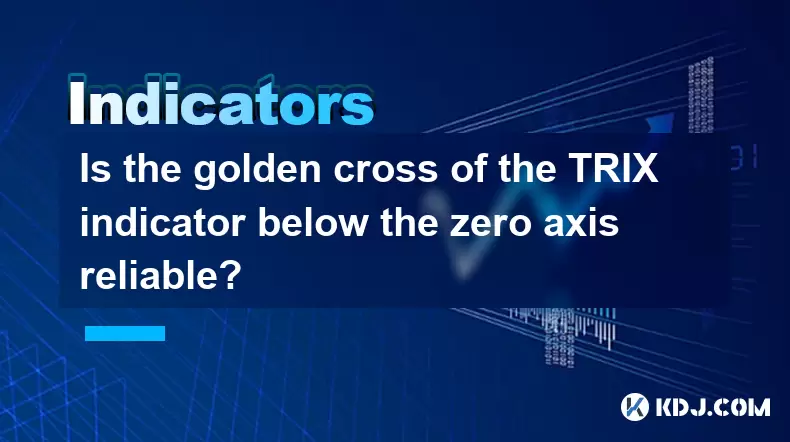
Is the golden cross of the TRIX indicator below the zero axis reliable?
Jun 24,2025 at 09:22pm
Understanding the TRIX Indicator and Its SignificanceThe TRIX (Triple Exponential Moving Average) indicator is a momentum oscillator used in technical analysis to identify oversold or overbought conditions, as well as potential trend reversals. It is calculated by smoothing price data three times using exponential moving averages and then taking the per...
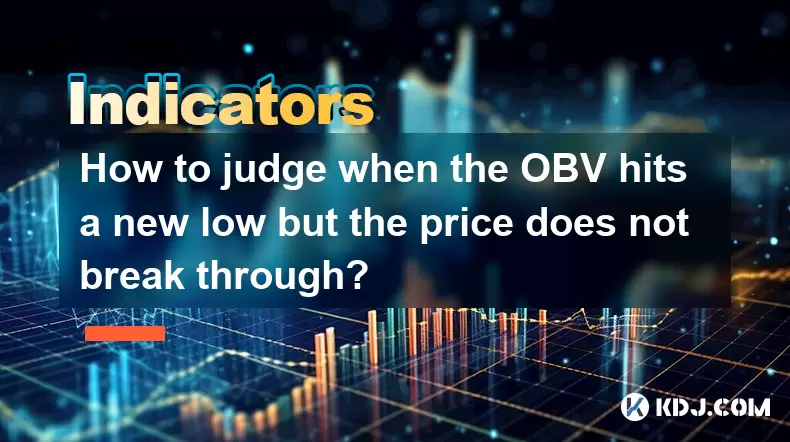
How to judge when the OBV hits a new low but the price does not break through?
Jun 24,2025 at 07:56pm
Understanding the Basics of OBV and Price ActionOn-Balance Volume (OBV) is a momentum indicator that uses volume flow to predict changes in stock or cryptocurrency prices. The core principle behind OBV is that volume often precedes price movement. When OBV hits a new low, but the price does not break through its previous support level, this can indicate...
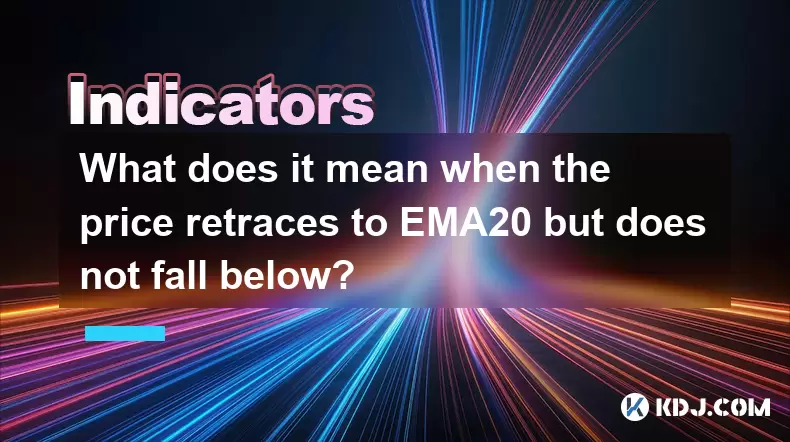
What does it mean when the price retraces to EMA20 but does not fall below?
Jun 24,2025 at 08:49pm
Understanding the EMA20 Indicator in Cryptocurrency TradingThe Exponential Moving Average (EMA) with a 20-period setting, commonly referred to as EMA20, is one of the most widely used technical indicators in cryptocurrency trading. It gives more weight to recent price data, making it more responsive to current price movements compared to simple moving a...
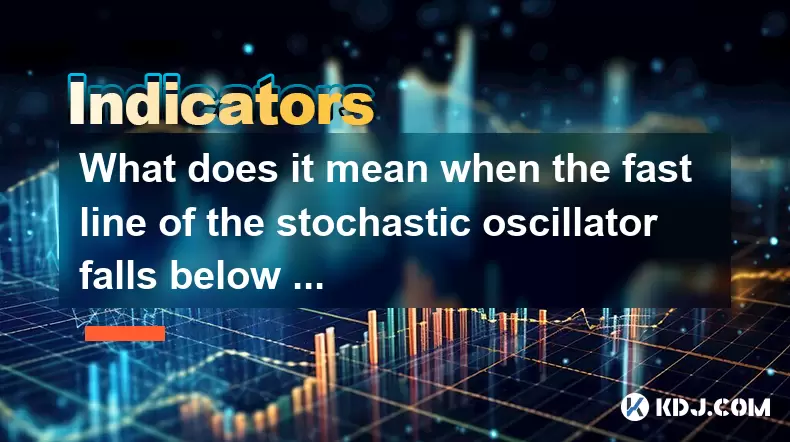
What does it mean when the fast line of the stochastic oscillator falls below the slow line?
Jun 24,2025 at 07:07pm
Understanding the Stochastic OscillatorThe stochastic oscillator is a momentum indicator used in technical analysis to assess overbought or oversold conditions in financial markets, including cryptocurrencies. It consists of two lines: the fast line (typically %K) and the slow line (typically %D). The fast line represents the current closing price relat...
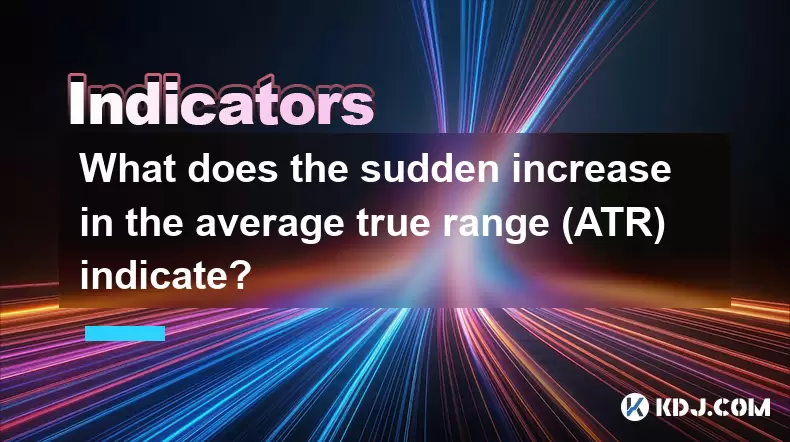
What does the sudden increase in the average true range (ATR) indicate?
Jun 24,2025 at 06:42pm
Understanding the Average True Range (ATR) in Cryptocurrency TradingThe Average True Range (ATR) is a technical indicator used by traders to measure market volatility. In the context of cryptocurrency, where prices can swing dramatically within short periods, ATR becomes an essential tool for assessing potential price movements. The ATR does not indicat...

What does it mean when the stochastic indicator repeatedly fluctuates at the 50 horizontal line?
Jun 24,2025 at 09:08pm
Understanding the Stochastic Indicator in Cryptocurrency TradingThe stochastic indicator is a popular momentum oscillator used by traders to identify potential trend reversals and overbought or oversold conditions. In cryptocurrency trading, where price movements can be highly volatile, understanding how this tool behaves becomes crucial for making info...

Is the golden cross of the TRIX indicator below the zero axis reliable?
Jun 24,2025 at 09:22pm
Understanding the TRIX Indicator and Its SignificanceThe TRIX (Triple Exponential Moving Average) indicator is a momentum oscillator used in technical analysis to identify oversold or overbought conditions, as well as potential trend reversals. It is calculated by smoothing price data three times using exponential moving averages and then taking the per...

How to judge when the OBV hits a new low but the price does not break through?
Jun 24,2025 at 07:56pm
Understanding the Basics of OBV and Price ActionOn-Balance Volume (OBV) is a momentum indicator that uses volume flow to predict changes in stock or cryptocurrency prices. The core principle behind OBV is that volume often precedes price movement. When OBV hits a new low, but the price does not break through its previous support level, this can indicate...

What does it mean when the price retraces to EMA20 but does not fall below?
Jun 24,2025 at 08:49pm
Understanding the EMA20 Indicator in Cryptocurrency TradingThe Exponential Moving Average (EMA) with a 20-period setting, commonly referred to as EMA20, is one of the most widely used technical indicators in cryptocurrency trading. It gives more weight to recent price data, making it more responsive to current price movements compared to simple moving a...

What does it mean when the fast line of the stochastic oscillator falls below the slow line?
Jun 24,2025 at 07:07pm
Understanding the Stochastic OscillatorThe stochastic oscillator is a momentum indicator used in technical analysis to assess overbought or oversold conditions in financial markets, including cryptocurrencies. It consists of two lines: the fast line (typically %K) and the slow line (typically %D). The fast line represents the current closing price relat...

What does the sudden increase in the average true range (ATR) indicate?
Jun 24,2025 at 06:42pm
Understanding the Average True Range (ATR) in Cryptocurrency TradingThe Average True Range (ATR) is a technical indicator used by traders to measure market volatility. In the context of cryptocurrency, where prices can swing dramatically within short periods, ATR becomes an essential tool for assessing potential price movements. The ATR does not indicat...
See all articles
























































































